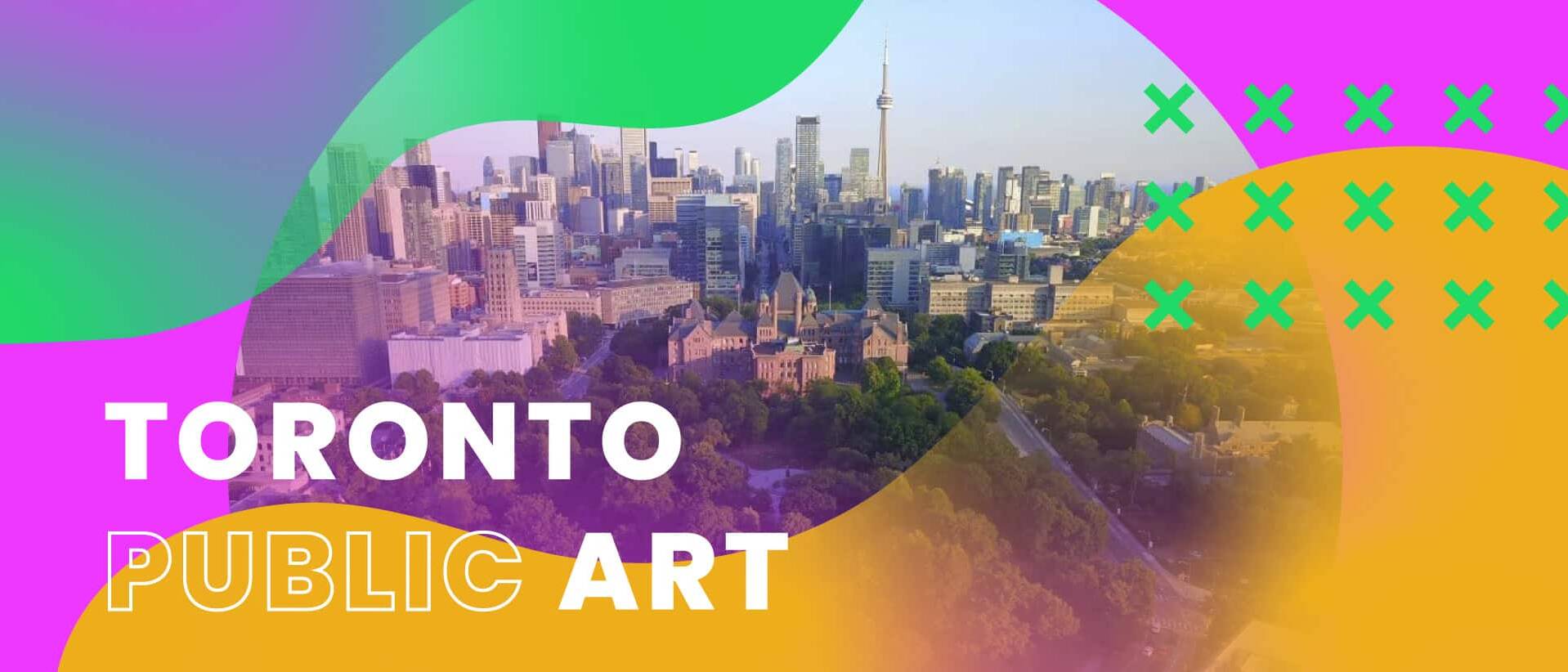October 18, 2021 | Photo courtesy of Destination Ontario
Toronto Public Art
Toronto is a famously diverse cultural hub for all of Canada. Perhaps less known is just how extensive and exciting the city’s public artwork is. But with a new initiative, ArtworxTO: Toronto’s Year of Public Art 2021–2022, all that is changing.
Day One
MORNINGSLIDE BY GREAT GRAFFITI
HEAD TO THE HEART OF STREET ART IN GRAFFITI ALLEY
Toronto’s Graffiti Alley proves just how awesome street art can be. A ribbon of city alleyway hidden behind Queen Street West, (its proper name is Rush Lane), expect to see wildly colourful murals, some by well-known Toronto street artists. Perfect for photo ops!
Murals pop up everywhere in the city, for instance 2021’s Storytelling Mural on Central Hospital Lane in Cabbagetown (a half hour transit ride from Graffiti Alley). It’s the city’s first laneway “healing corridor,” with a series of Indigenous medicinal gardens and a mural based on Indigenous healing stories. It’s also part of The Laneway Project, transforming Toronto’s overlooked public spaces.
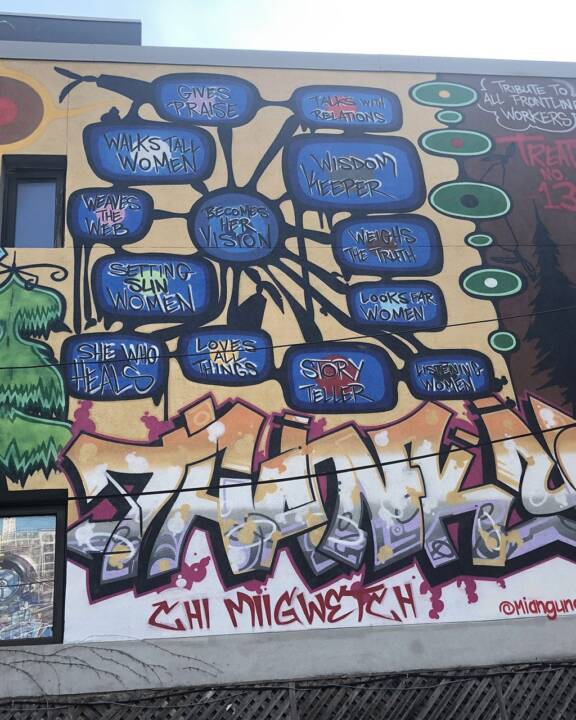
MORNINGWEND YOUR WAY THROUGH KENSINGTON
A FEAST FOR ALL SENSES IN KENSINGTON MARKET
Kensington Market is more than just a market, it’s a neighbourhood! A short walk north of Graffiti Alley, the market is on the traditional territory of the Haudenosaunee, the Mississaugas of the New Credit First Nation, and the Huron-Wendat. You may notice this history reflected in Queen Street’s other name, Ogimaa Mikana. It’s part of the The Ogimaa Mikana Project, aimed at restoring Anishinaabemowin place names to Toronto’s streets and byways.
The area first became a market in the early 1900s when Jewish immigrants moved into the area. That wave of migration also gave rise to the nearby fashion district, marked by artist Stephen Cruise’s giant thimble, “Uniform Measure/Stack,” at Spadina and Richmond.
Today the market is a rich tapestry of many cultures, a walkable, open-air marketplace filled with delectable produce; vintage clothing stores, and eclectic restaurants. One popular spot for live music is the restaurant/bar fittingly called Supermarket.
If you’re hankering for some of the best Chinese food anywhere, stroll a few minutes east to North America’s largest Chinatown. It’s a parade of fresh fruit, veggies and herbs, and its restaurants feature everything from delectable dim sum to delicious dumplings. (Mother’s Dumpling’s is one perennially popular spot.)
Of course, you could make a whole day of it in the Kensington-Chinatown area, for art as well as edibles. The Art Gallery of Ontario on Dundas Street is minutes away, and home to the famed Henry Moore Sculpture Centre. (To literally get into Moore’s work visit nearby Grange Park, and slide onto his famous “Large Two Forms” sculpture.) StrollTo’s guide to the neighbourhood will provide yet more reasons to linger longer.
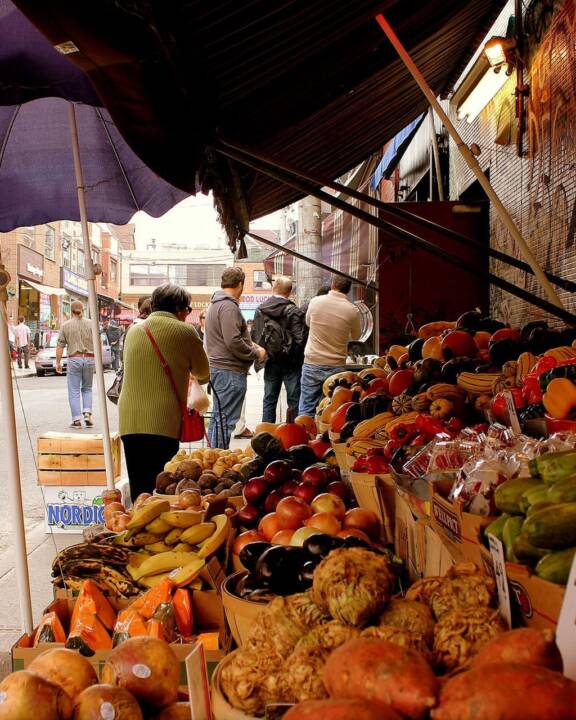
AFTERNOONROAM THE ROM
TAKE PHILOSOPHER’S WALK TO THE ROYAL ONTARIO MUSEUM
Take one of the city’s loveliest pathways — Philosopher’s Walk — which brings you through the University of Toronto, following the now-underground Taddle Creek. At Bloor Street round the corner east to the Royal Ontario Museum. The ROM is rightfully one of the most visited museums in Canada, with extensive galleries of art, world culture, and natural history. Delve into the Daphne Cockwell Gallery, a permanent exhibition dedicated to First Peoples art and culture. The exhibition contains more than one thousand works, from beautiful birchbark canoes to Lakota Sioux chief Sitting Bull’s war bonnet.
Bloor Street itself is home to Mink Mile, so named for an abundance of upscale shops. But the area is also a treasure trove of museums, art exhibitions and cultural centres, all within an easily walkable one mile (or via a quick subway hop). No wonder it’s been dubbed the Bloor Street Culture Corridor.

EVENINGSHOWTIME!
GET YOUR MUSIC FIX AT ICONIC KOERNER AND MASSEY HALLS
Two of the city’s finest concert halls are close to the ROM: the stunning Koerner (a three-minute walk), and legendary Massey (a twenty-minute subway ride). Koerner opened in 2009 to rave reviews for its acoustics and beauty. It showcases classical, jazz, pop and world music concerts of the highest order. The recently renovated Massey Hall dates back to 1894, and it’s seen an incredible list of artists perform centre stage, from Maria Callas to Bob Dylan to Glenn Gould to Bob Marley.
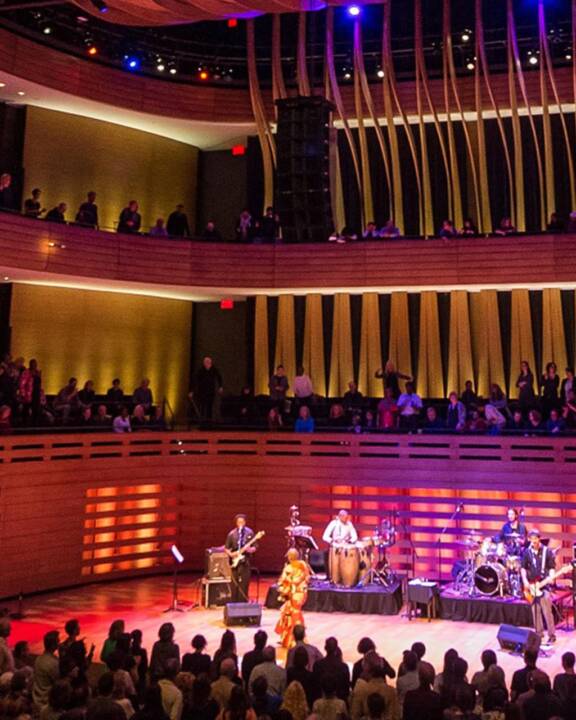
Day Two
MORNINGBEGIN BY THE LAKE
MEDITATE AT THE MUSIC GARDEN
The beguiling Toronto Music Garden makes for a tranquil, lakeside start to your day. The musical work that inspired it, Bach’s First Suite for Unaccompanied Cello, is reflected in the actual garden, with each movement corresponding to a different section.
From garden calm to city hustle and bustle — and colour, thanks to the Toronto Colour Walk, created by Toronto West BIA. Downtown buildings may trend grey, but splashes of artist-created colour bring the city to life. This self-guided walking tour takes you by a range of sculptures and murals, including two works by Douglas Coupland (yes, Generation X author Douglas Coupland): the playful “Bobber Plaza” and “Superior,” inspired by Group of Seven artist Lawren Harris’ painting “North Shore, Lake Superior, 1926.”
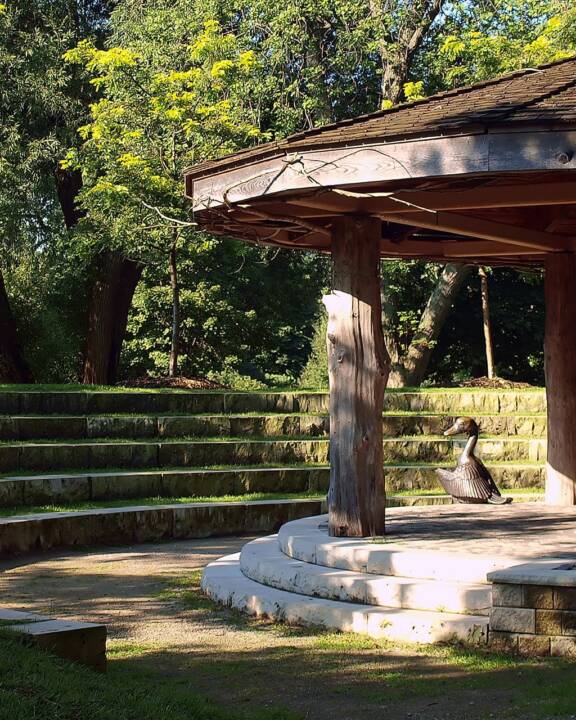
AFTERNOONLUNCH IN LESLIEVILLE
HISTORY AND HIPNESS, FROM THE DISTILLERY TO LESLIEVILLE
Stop 2: Head east to hip Leslieville, maybe with a stop en route at the Distillery District. There you can stroll the pedestrian-only enclave of restaurants, boutiques and galleries, all in striking former Victorian industrial buildings. On to Leslieville, so named after pioneering gardener George Leslie, whose 19th century nurseries spanned 150 acres. Artefacts from fields around Jones and Queen streets suggest that long before flowers and fruits Indigenous peoples camped in or near what’s now Leslie Grove Park. Today the area has a village feel, casual and fun, with plenty of options for foodies. Note: Take the streetcar from The Distillery to Leslieville to trundle over the Queen Street Bridge beneath by Eldon Garnet’s elegant art installation, “Time and a Clock.”
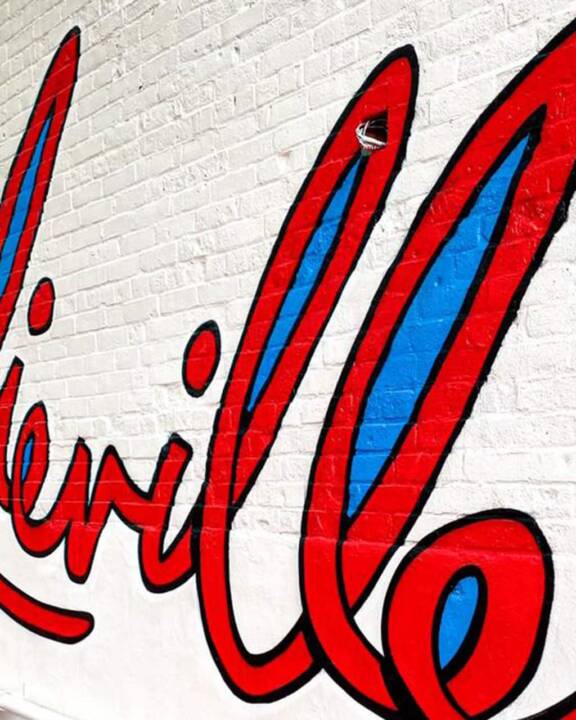
AFTERNOONWALK THE DON
WALK THE DON RAVINE FOR URBAN FOREST AND SCULPTURAL SURPRISES
Toronto is a city of ravines, a network of urban forest perfect for biking, walking and occasional glimpses of wild critters. Access the Lower Don Trail (a 4.7 kilometre walk along the Don River) at the Queen Street Bridge and head north. You’ll pass beneath the arched magnificence of the Prince Edward Viaduct (better known as the Bloor Viaduct, made famous by Michael Ondaatje’s In The Skin of a Lion). Next you’ll encounter “Monsters for Beauty, Permanence, and Individuality,” reconstructed copies of gargoyles from historic Toronto buildings. These striking sculptures were created by Omaskêko Cree artist Duane Linklater as part of the Don River Valley Park Art Program. Once you’re all walked out head up to The Danforth and Greektown for mouth-watering Greek specialties.
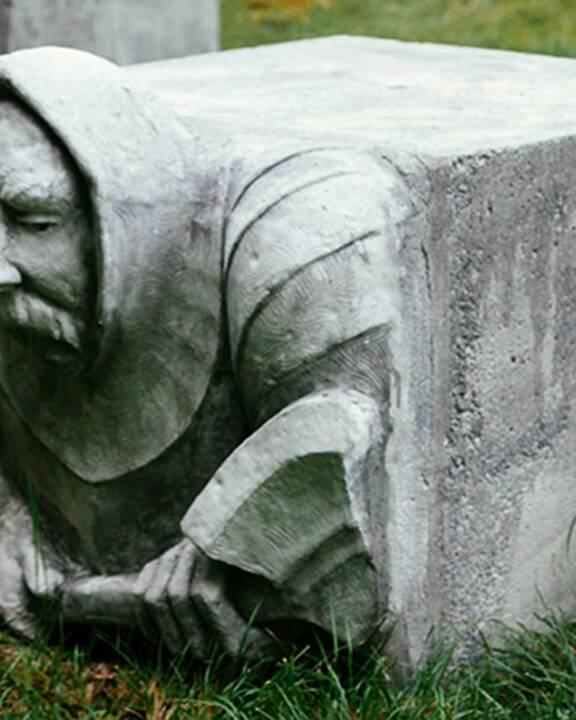
EVENINGCATCH A SHOW
TIME FOR SOME MUSIC…OR DANCE…OR THEATRE
Built as a movie theatre in 1919, the character-filled Danforth Music Hall hosts both local and international musicians. Home to smallish shows (capacity is roughly 1,400) it has a neighbourhood feel, bordered by leafy Riverdale. Or, if the play’s the thing, take a short streetcar ride south to Crow’s Theatre. Crow’s opened in 2017 in a sleek new complex complete with lobby bar. Since then, it’s quickly became a preeminent cultural destination with a penchant for inventive, fiercely contemporary (and frequently Canadian) work.
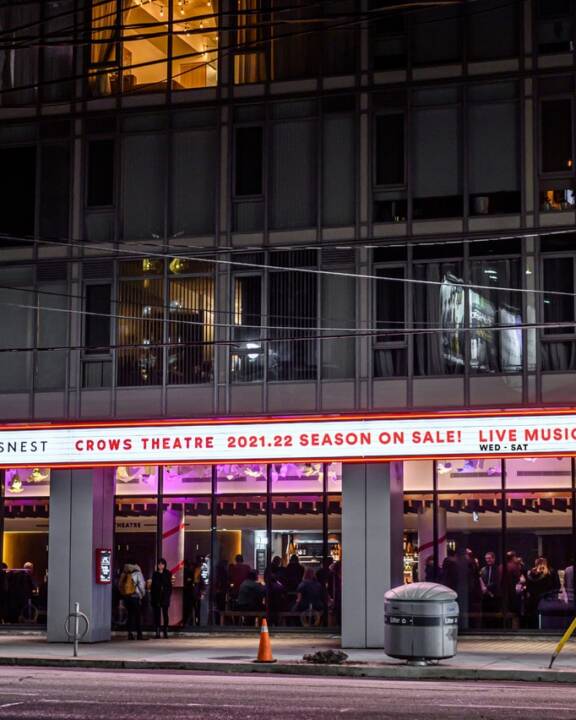
YOUR TRIP AT A GLANCE
SEE
Art Gallery of Ontario
ArtworxTO: Toronto’s Year of Public Art 2021–2022
Crows Theatre
Danforth Music Hall
Distillery District
Don River Valley Park Art Program
Duane Linklater, Monsters for Beauty, Permanence, and Individuality
Eldon Garnet, Time and a Clock
Grange Park
Greektown on the Danforth
Henry Moore, Large Two Forms
Koerner Hall
The Laneway Project
Massey Hall
The Ogimaa Mikana Project
ROM
Stephen Cruise,
Uniform Measure/Stack
Supermarket Bar
Toronto Music Garden
YOUR TRIP AT A GLANCE
This guide represents a weekend-long experience, highlighting one of the many wonderful destinations in the area. To suggest a destination for a future guide, please contact us.
All editorial decisions were made at the sole discretion of Ontario Culture Days staff. This guide was written by Li Robbins.

